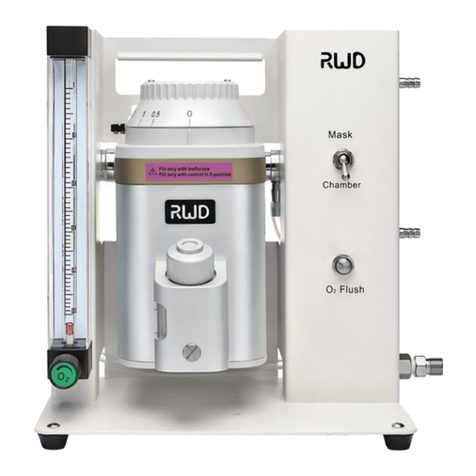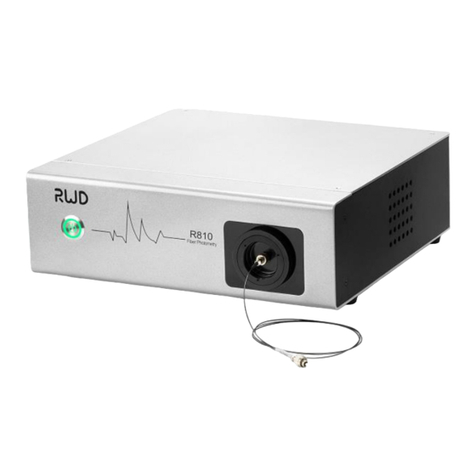
5-Operation .........................................................................................................18
5.1 Overview........................................................................................................................ 18
5.2 Pre-use checkout ........................................................................................................... 18
5.3 Anesthesia procedure.................................................................................................... 18
5.4 Using the oxygen flush function.................................................................................... 18
5.5 Using the rebreathing circuit and non-rebreathing circuit ........................................... 19
5.6 Adjusting the highest pressure in system ..................................................................... 19
5.7 Post-anesthesia procedure............................................................................................ 19
6-Troubleshooting ...............................................................................................20
6.1 Overview........................................................................................................................ 20
6.2 Safety............................................................................................................................. 20
6.3 Machine status .............................................................................................................. 20
6.4 Record keeping.............................................................................................................. 20
6.5 Problem –Solution matrix............................................................................................. 20
7-Maintenance ....................................................................................................24
7.1 Overview........................................................................................................................ 24
7.2 Safety............................................................................................................................. 24
7.3 Annual inspection.......................................................................................................... 24
7.4 Machine status .............................................................................................................. 24
7.5 Record keeping.............................................................................................................. 24
7.6 Parts and materials........................................................................................................ 24
7.7 Cleaning the equipment ................................................................................................ 24
7.7.1 Required materials and supplies............................................................................. 25
7.7.2 Weekly maintenance .............................................................................................. 25
7.7.3 Draining the vaporizer............................................................................................ 25
8-Product information .........................................................................................27
8.1 Product warranty........................................................................................................... 27
8.2 Product specifications ................................................................................................... 27
9-Useful information............................................................................................28
9.1 Overview........................................................................................................................ 28
9.2 Pressure equivalents ..................................................................................................... 28
9.3 Pressure unit conversions ............................................................................................. 28
9.4 Minimum alveolar concentration (MAC) anesthetic levels........................................... 28





























